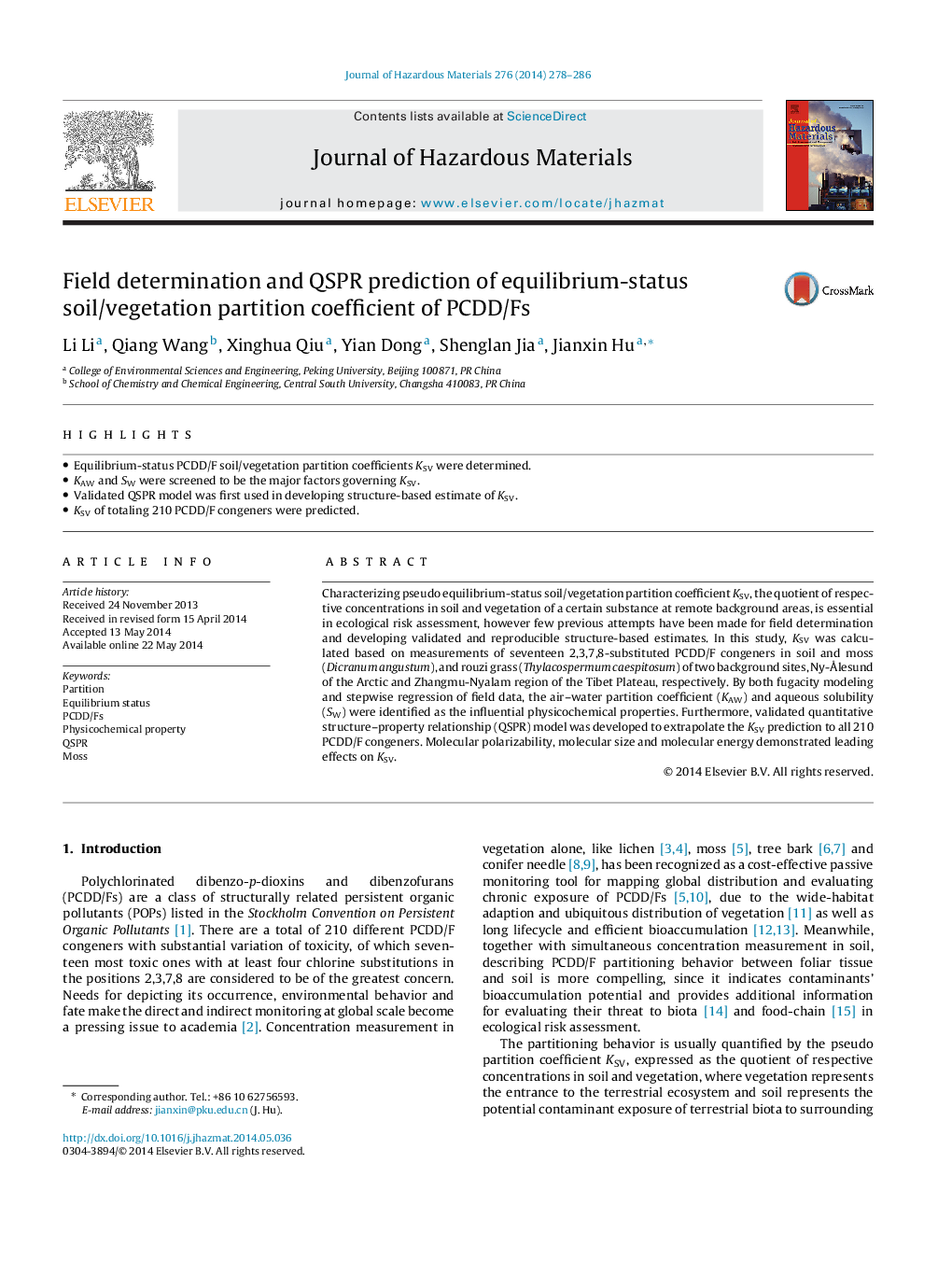| Article ID | Journal | Published Year | Pages | File Type |
|---|---|---|---|---|
| 576845 | Journal of Hazardous Materials | 2014 | 9 Pages |
Abstract
Characterizing pseudo equilibrium-status soil/vegetation partition coefficient KSV, the quotient of respective concentrations in soil and vegetation of a certain substance at remote background areas, is essential in ecological risk assessment, however few previous attempts have been made for field determination and developing validated and reproducible structure-based estimates. In this study, KSV was calculated based on measurements of seventeen 2,3,7,8-substituted PCDD/F congeners in soil and moss (Dicranum angustum), and rouzi grass (Thylacospermum caespitosum) of two background sites, Ny-Ã
lesund of the Arctic and Zhangmu-Nyalam region of the Tibet Plateau, respectively. By both fugacity modeling and stepwise regression of field data, the air-water partition coefficient (KAW) and aqueous solubility (SW) were identified as the influential physicochemical properties. Furthermore, validated quantitative structure-property relationship (QSPR) model was developed to extrapolate the KSV prediction to all 210 PCDD/F congeners. Molecular polarizability, molecular size and molecular energy demonstrated leading effects on KSV.
Related Topics
Physical Sciences and Engineering
Chemical Engineering
Chemical Health and Safety
Authors
Li Li, Qiang Wang, Xinghua Qiu, Yian Dong, Shenglan Jia, Jianxin Hu,
